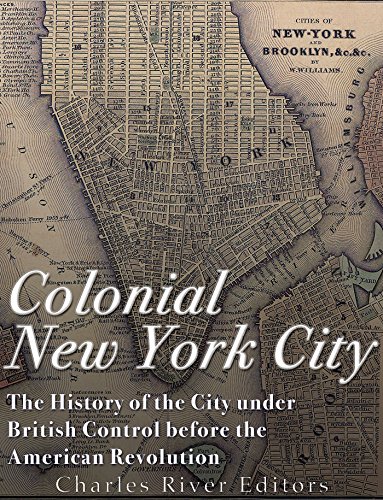Product desciption
Colonial New York City The History Of The City Under British Control Before The American Revolution Charles River Editors by Charles River Editors instant download after payment.
*Includes pictures
*Includes contemporary accounts describing colonial New York
*Includes a bibliography for further reading
“One belongs to New York instantly; one belongs to it as much in five minutes as in five years.” – Tom Wolfe
New York City. The Big Apple. The city of dreams. The city so nice they named it twice. These are just some of the monikers given to not only the most highly populated city in North America, but perhaps the most culturally diverse region in all the world. Modern age New York is stamped on the map for its breathtaking skylines and iconic financial centers, as well as being the quintessential melting pot, where people go to “make it big” and take a chance on long-awaited dreams. What is less known is the rich tapestry of history behind this one-of-a-kind city. It is one that tells the story of invigorating hope, new discoveries, and broadening horizons, shaped by power wrangles and blood-shedding – all for the sake of conquest.
After much exploration in the early 17th century, the Dutch returned to build settlements on the southern tip of Manhattan and elsewhere, and by 1626 trade was brisk both between the Native Americans and the European settlers and between the settlers and their mother countries. In the 1620s, the Dutch established their first permanent base at Fort Orange, a city now known as Albany, and the Dutch dispatched vessels housing 30 families to Nutten Island and re-branded the settlement as “New Amsterdam.” All in all, 110 men, women, and young children of the Belgian Huguenots – a French Protestant sect – settled in their new sanctuary. This would be the breeding ground for the Dutch's new experiment. They aimed to create a city of religious tolerance, where people from all backgrounds could seek refuge and live alongside one another in peace. More so, the Dutch were in the business of making money, a mission that still rings true of the state in this day and age.
In 1652, England and the Netherlands were at war, but heavy losses on both sides hurried the prospect of peace. Nevertheless, the two countries’ representatives in the New World were increasingly hostile toward each other, even though they were an ocean away from the main belligerents. The Puritans of New England were said to be intent on attacking Manhattan, so preparations were made in New Amsterdam. A wall would be erected at New Amsterdam’s northern border, at a cost of 5,000 guilders, with the labor being cheaply supplied by slaves. Made of 15 foot planks, bastions, cannons, and two gates (one at the corner of present-day Wall and Pearl, the other at Wall and Broadway) the location of the wall would become not a barrier to invasion but the center of the financial world.
In the meantime, however, the wall ultimately proved as useless as all other Dutch defenses and strategies. In 1664, Colonel Richard Nicolls was sent by the English Duke of York to take Manhattan and all other Dutch holdings. Nicolls sent Stuyvesant a letter that promised life and liberty for all if the inhabitants would lay down their arms and surrender. Stuyvesant hid this letter and tore up another, but powerful residents in New Amsterdam forced him to give up in the face of too formidable an enemy. In the end, the diversity of New Amsterdam helped assure that the people would rather become part of New York City than lose everything. The Dutch briefly reclaimed the city, but the tide had turned, and New York became an English settlement. For their own part, the Lenni-Lenape who had lived there for so long dwindled until there were only about 200 of them left at the beginning of the 18th century.
Colonial New York City: The History of the City under British Control before the American Revolution chronicles the history of the city during its time in British hands. Along with pictures of important people, places, and events, you will learn about New York City as a British possession like never before, in no time at all.


